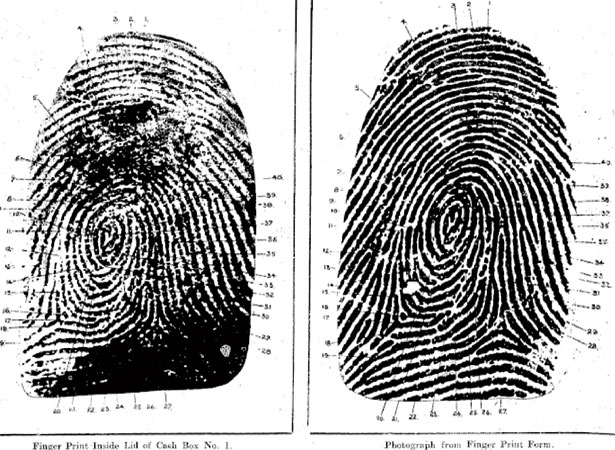
In what may have been a world first for a capital crime, the conviction of Dennis Gunn was based almost entirely on fingerprint evidence.
Postmaster Augustus Braithwaite was murdered on 13 March 1920. The killer took his keys and ransacked the Ponsonby Post Office. Police found fingerprints on three cash boxes and sent them to the Criminal Registration Branch (CRB) for analysis.
Dennis Gunn came to the police’s attention after he was seen hanging around the Post Office. They sent his name to the CRB, who held his fingerprints on file from a previous conviction. The fingerprints on the cash boxes matched Gunn’s.
Following his arrest, police found property stolen during the robbery and a recently fired gun near Gunn’s house. Grooves on the weapon corresponded with marks on the bullets found in Braithwaite’s body. One of Gunn’s fingerprints was found on the weapon.
While admitting to the robbery, Gunn claimed Braithwaite had been killed by an accomplice. The jury was not convinced and Gunn was sentenced to death. He was hanged in Auckland on 22 June.
Read more on NZHistory
Capital punishment in New Zealand – The death penalty1920 - key events – The 1920sNew Zealand crime timeline – Crime timelineFrederick Chapman
External links
How to cite this page
'Fingerprints help convict murderer', URL: https://nzhistory.govt.nz/page/fingerprints-help-convict-murderer, (Ministry for Culture and Heritage), updated 20-Jan-2021
